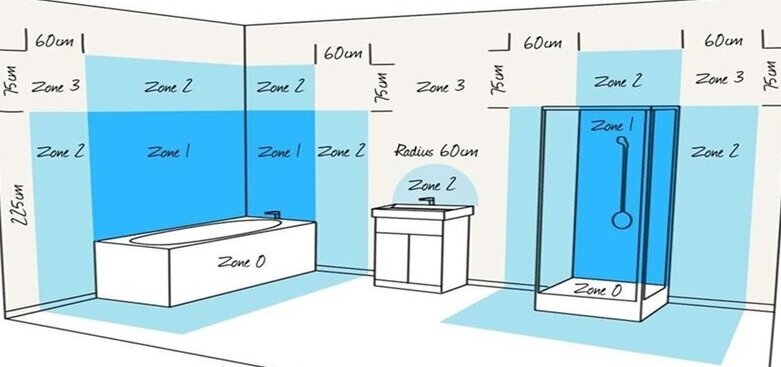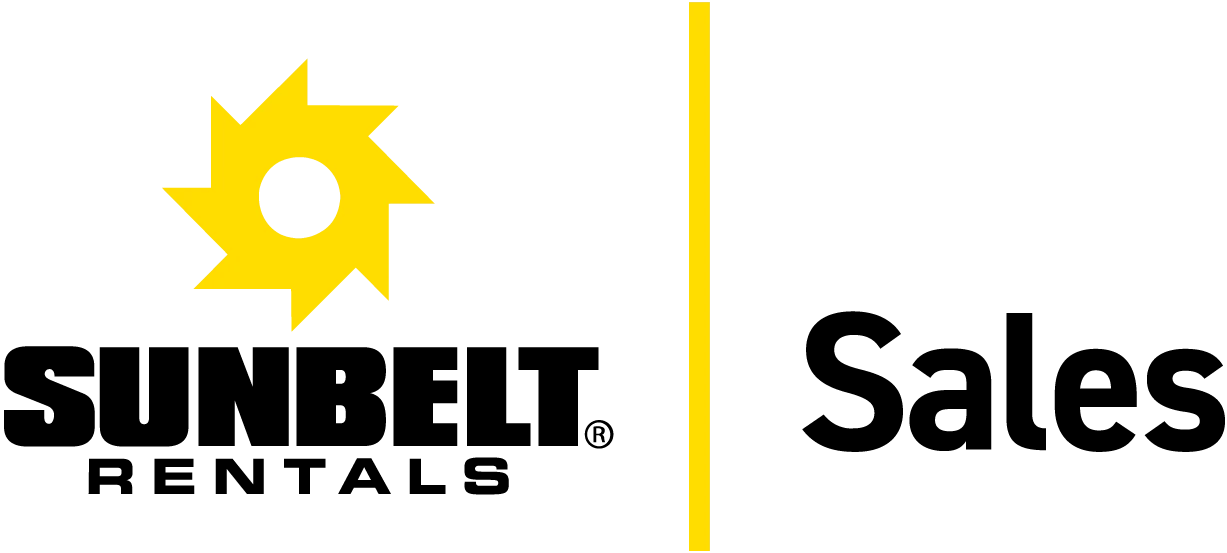
Bathroom Zones and IP Ratings Explained
Bathroom zones are areas where electrical appliances must offer a degree of protection against water. The zone number refers to the amount of water likely to be present.
Bathroom zones are areas where electrical appliances must offer a degree of protection against water. The zone number refers to the amount of water likely to be present.
To illustrate IP zoning regulations, we have divided the illustration of a bathroom below into zones. These are classified using the numbers 0, 1 and 2. The lower the zone number, the higher the IP (Ingress Protection) rating must be.
IP ratings are used in the UK to show the level of protection around electrical equipment and lighting. Electrical appliances are assigned a certain IP rating which indicates how much protection they provide against ingress of water and other particles. Each zone has a minimum requirement that must be met if a fitting is to be installed in this area.
- Zone 0 - Inside the bath or shower. Any fittings used here must be SELV (Separated Extra Low Voltage - Max. 12V) and have a minimum rating of IPX7 (IP67) (protected against immersion in water - total immersion proof).
- Zone 1 - Above the bath or shower to a height of 2.25m. A minimum rating of IPX4 (IP44) is required. In this zone, if there is likelihood of water jets being used for cleaning purposes, a minimum of IPX5 is required.
- Zone 2 - The area stretching to 0.6m outside the bath or shower and above the bath or shower if over 2.25m. An IP rating of at least IPX4 (IP44) is required. In this zone, if there is likelihood of water jets being used for cleaning purposes, a minimum of IPX5 is required. In addition, it is a good practice to also consider the area around a wash basin (within a 60cm radius of any tap) as zone 2.
- Outside the zones - Anywhere outside zones 0, 1, and 2. Where water jets are not to be used for cleaning purposes. Here, there is no requirement for any lighting solutions to be protected against particles or solid objects, e.g. IPX4 - no IP rating required.
IP Ratings Explained
- The first digit - Protection against ingress of foreign bodies such as tools, dust, fingers, etc.
- The second digit - Protection against ingress of liquids. Ex. IP44 offers protection against solid objects greater than 1mm and water sprayed from all directions.
The First Digit - Protection from Foreign Bodies
0 - No protection from foreign bodies;
1 - Protected against solid objects greater than 50mm (e.g. accidental touch by hands);
2 - Protected against solid objects up to 12mm (e.g. fingers);
3 - Protected against solid objects greater than 2.5mm(e.g. tools and wires);
4 - Protected against solid objects greater than 1mm (e.g. small tools and wires);
5 - Protected against dust, limited ingress (e.g. no harmful deposit);
6 - Totally protected against dust.
The Second Digit - Protection from Liquids
0 - No protection from liquids;
1 - Protection against vertically falling drops of water (e.g. condensation);
2 - Protection against direct sprays of water up to 15 degrees from vertical;
3 - Protection against direct sprays of water up to 60 degrees from vertical;
4 - Protection against water sprayed from all directions (limited ingress permitted);
5 - Protected against low pressure jets of water from all directions (limited ingress permitted);
6 - Protected against high pressure jets of water (use on ship deck) - limited ingress permitted;
7 - Protected against the effects of immersion between 15cm and 1m;
8 - Protected against long periods of immersion under pressure.
Although there are numerous combinations of IP ratings, the most common are IP67, IP44, IP65 and IP20.
Our expert team are on hand to answer any of your questions!

